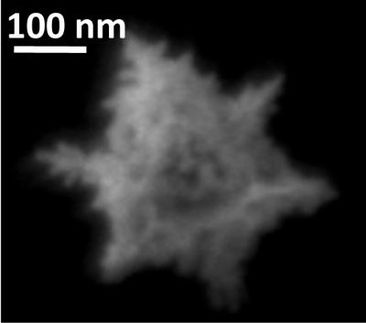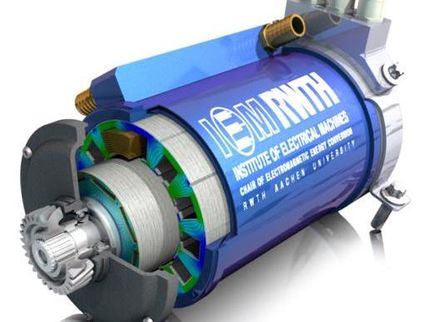EPA awards UH lead role to study toxin effects on embryonic development
$3.2M grant to explore how chemicals affect human health, which ones may cause serious diseases
Advertisement
Most people would agree that arsenic, lead, mercury, benzene and carbon monoxide pose dangers to humans. Not many, though, realize that the average person is exposed to about 10,000 different chemicals per day.
Thanks to a $3.2 million grant from the Environmental Protection Agency (EPA) and its Science to Achieve Results (STAR) program, a group of University of Houston researchers is taking the lead with about $1.5 million in a collaboration involving the Texas A&M Institute for Genomic Medicine and Indiana University. The other two research groups were awarded about $750,000 each for their contributions.
The primary aim of the three-year grant is to contribute to a more reliable chemical risk assessment that will provide clues to how certain chemicals affect human health. This will provide researchers with a wealth of new information about what toxins may cause serious diseases. Examples may be embryos exposed to chemicals that reduce the number of brain stem cells or change the number of neurons resulting in a greater risk of developing neurodegenerative diseases in adulthood, such as Parkinson's and Alzheimer's disease, as well as detecting developmental effects like spina bifida, one of the most common birth defects.
A new virtual center has been assembled through the EPA to analyze the effects of many of these toxic chemicals on the developing embryo. Initiated by the Center for Nuclear Receptors and Cell Signaling (CNRCS) at UH, the new entity, called the Texas-Indiana Virtual STAR (TIVS) Center, is led by Dr. Jan-Åke Gustafsson, Robert A. Welch Professor in UH's biology and biochemistry department and CNRCS director. Joining Gustafsson, who is the director of the TIVS Center, is Maria Bondesson, research assistant professor of biology and biochemistry and manager of the TIVS Center, and post doc Catherine McCollum. All three are part of UH's College of Natural Sciences and Mathematics.
Donald A. Fox, an expert in imaging and developmental neurotoxicology with the UH College of Optometry and professor of vision sciences, biology and biochemistry, and pharmacology, also is part of the UH team. The EPA grant will allow the UH group to add another post doc, a lab tech and a Ph.D. student. Part of the funds also will go toward purchasing equipment and developing a communication system for the three locations of this interdisciplinary center.
"There are so many industrial chemicals in the environment – more than 80,000 – but only a few are tested for their danger levels and, moreover, the synergies between them aren't being analyzed," Bondesson said. "One barrier to the current methods of testing such toxins has been that rats and mice are only exposed to one chemical at a time, which slows down the assessment of risks and does not address the fact that people are exposed to several chemicals at once in real life, many of which interact with each other."
A main goal of this multidisciplinary research will be to include finding ways to speed up the testing process and decrease the costs. This can be done through the use of zebrafish in the studies to be performed at UH, which is a new approach that will complement Texas A&M's use of mouse embryonic stem cells in this project. While it can be argued that, as mammals, mice are closer to humans, they are much more costly. Furthermore, zebrafish can be exposed to several toxins at once, more realistically representing the world in which we live.
Zebrafish breed in large numbers at a rate of up to 200 embryos in one cycle, thereby being less expensive to use, whereas mice only yield about eight siblings at a time. Another advantage of using zebrafish is that they have a fast embryonic development, with their embryonic organ formation taking days, as compared to mice taking weeks and humans, of course, taking months. This rapid development of zebrafish gives scientists the capacity to analyze many samples in a short time. Another benefit to using the fish as compared to mice is that more chemicals can be tested on zebrafish simultaneously, instead of only being able to test one or a few toxins at a time on the mouse models. There are, however, a number of similarities between fish and mammals with regard to developmental pathways, and about 75 percent of their genes are the same.
Once the respective fish and rodent embryonic stem cells are exposed to toxins ranging from arsenic to chloroform, the two systems will provide a rapid and concise complementary approach to assess the impact of environmental pollutants on common developmental embryonic endpoints. Both groups – UH and A&M – will analyze various chemicals on the embryonic development of the neurons and central nervous system, heart, blood and blood vessels, as well as an early developmental process called gastrulation. The researchers also will be able to determine if there is a certain window of time when embryos are more susceptible to toxins during their development.
Once the comparisons from UH and A&M's research are made, the researchers expect to find similar effects on the same types of genes. If they find that to be the case, there is a good chance these results can begin to be extrapolated to the human situation. From the zebrafish and mouse data, Indiana University will perform computer simulations, with plans to develop predictive computer models for developmental toxicity on processes that are relevant for human embryonic development. Indiana's role will use the fish and rodent results to build computer models that can simulate the effects of chemical exposure. In other words, virtual toxins can be created to eliminate the use of actual toxins and need for mammalian and fish testing, replacing them with computers.
Ultimately, as chemical production increases around the globe, there is increased evidence of hazardous effects on human health. The researchers say current chemical regulations are insufficient, and the environmental and public health implications of toxin exposure have not been fully determined for the vast majority of chemicals, with a considerable knowledge gap remaining between exposure and effects. Therefore, a need to restructure the risk-assessment procedure is necessary to protect future generations.
A main objective of TIVS is to contribute to a more reliable chemical risk assessment through developing increasingly effective screening models of developmental toxicity. By incorporating the collective results and subsequent computer models developed during this research project into other screening projects that are being performed in the United States and Europe, researchers will be able to better prioritize chemicals for further risk assessment, with new methods for the screening of developmental adverse effects in zebrafish and mouse embryonic stems cells that are relevant for human embryonic development.
































































